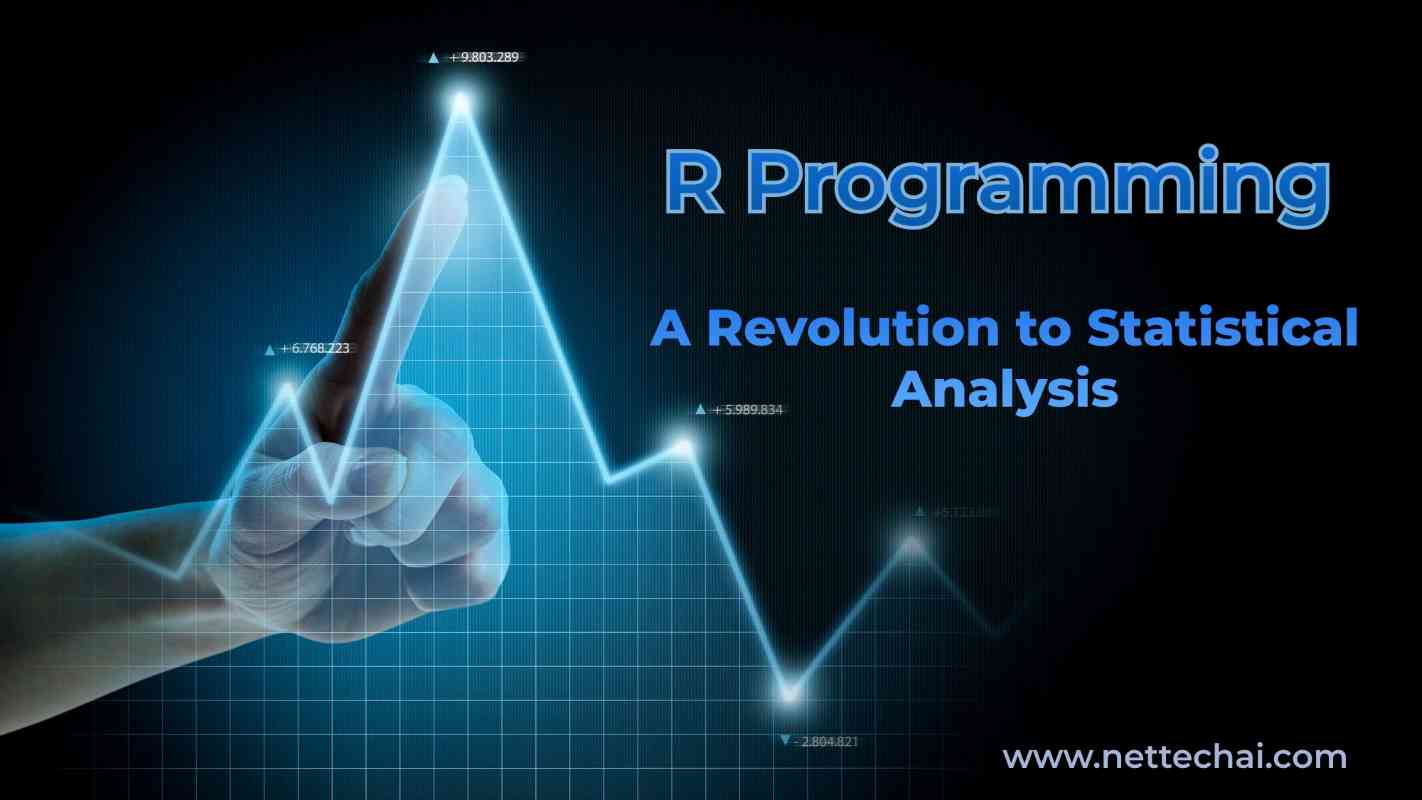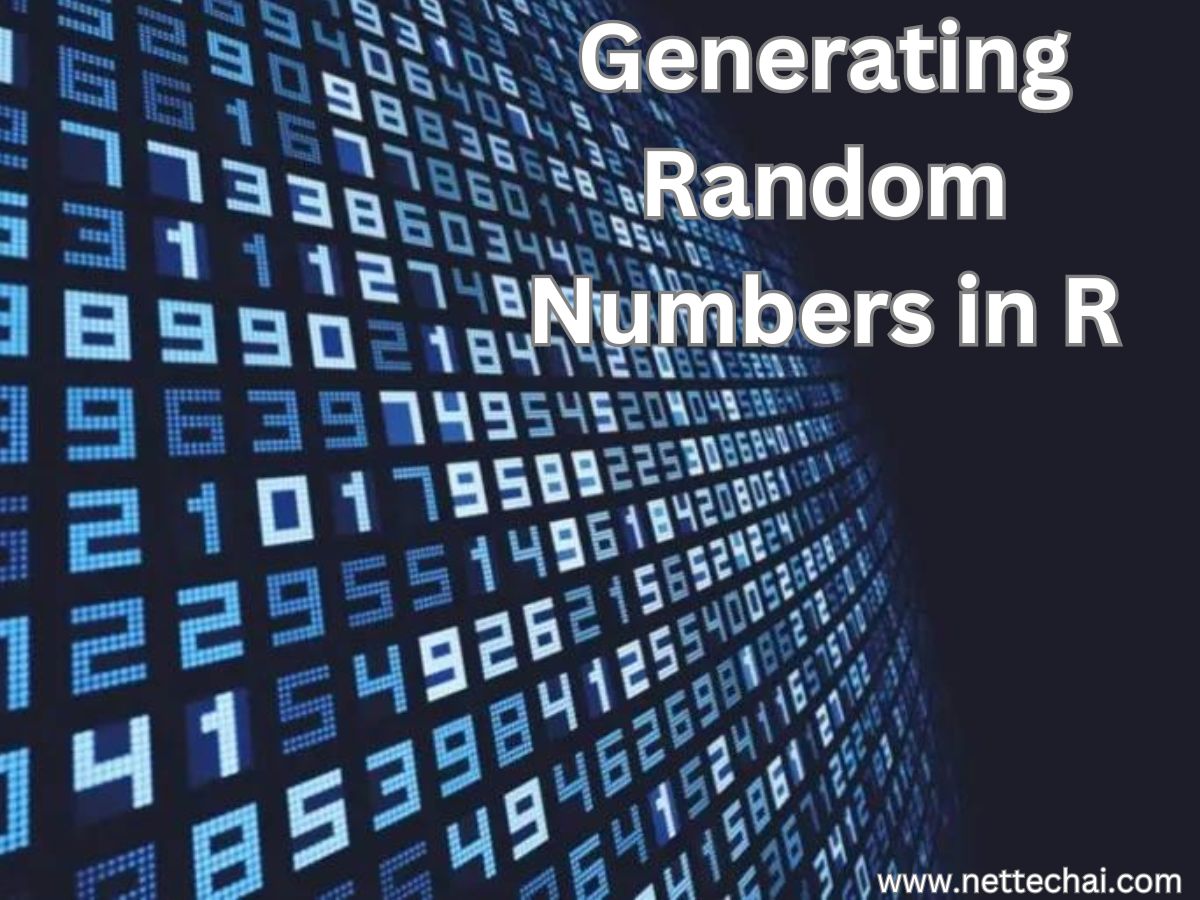R Programming Language: A Revolution to Statistical Analysis

In the steadily growing scene of information science and factual examination, the R programming language remains as a guide of development and flexibility. With its beginnings well established in the domain of measurements and information control, R has quickly arisen as a go-to language for specialists, analysts, information researchers, and examiners. Its allure lies in its vigor, adaptability, and a broad environment that upholds a horde of measurable strategies, making it a vital device for investigating complex datasets and determining significant experiences.
R, created by Ross Ihaka and Robert Noble man in the last part of the 1990s, was explicitly intended to take care of the necessities of analysts and information examiners. What separates R is its capacity to change crude information into significant information, empowering experts to uncover examples, patterns, and connections inside tremendous datasets. Its sentence structure, albeit extraordinary, offers a strong and natural system for communicating complex measurable examinations, making it open to the two fledglings and old pros.
One of R’s characterizing highlights is its transparency and extensibility. As an open-source programming language, R encourages a lively and cooperative local area of clients and engineers. This cooperative soul has prompted the making of an immense vault of bundles, each custom-fitted to address explicit logical difficulties. These bundles broaden R’s center usefulness, giving answers for different undertakings, for example, relapse examination, AI, time series gauging, and information perception. This abundance of bundles guarantees that R stays at the front line of mechanical progressions in the field of information science.
The language’s versatility is obvious in its capacity to deal with different information types and designs. R’s information control abilities are exemplified through its help for vectors, frameworks, clusters, information casings, and records. These information structures enable investigators to perform complicated activities, changing crude information into designs reasonable for cutting-edge examinations. Furthermore, R consistently incorporates data sets, calculation sheets, and different information sources, working with consistent information importation and control.
Moreover, R’s ability in perception is critical. The language offers a variety of complex plotting and diagramming choices, empowering clients to make outwardly engaging and instructive outlines. Whether making intuitive online perceptions or producing distribution quality static plots, R gives the devices important to successfully convey complex information-driven accounts. This representation adaptability is essential in imparting discoveries to assorted crowds, upgrading the language’s utility in scholarly examination, business examination, and logical investigation.
R’s intuitive nature encourages a unique learning climate. Its order line interface permits clients to try, repeat, and investigate information progressively, working with an instinctive comprehension of measurable ideas. Also, the language’s rich documentation, combined with a broad cluster of online instructional exercises and discussions, engages students to dominate R’s complexities and apply its abilities to certifiable situations.
R Environment:
R addresses a thorough set-up of programming devices committed to information control, calculation, and graphical portrayal. Inside its structure, it envelops a few key highlights:
- Proficient Information Taking care of: R gives vigorous components to information capacity and dealing with, guaranteeing successful administration of datasets.
- Cluster Computations: It offers a bunch of administrators customized for exhibit estimations, explicitly frameworks, empowering unpredictable numerical tasks.
- Incorporated Information Examination Devices: R brags a strong variety of middle instruments fastidiously intended for information investigation, guaranteeing a consistent logical interaction.
- Graphical Abilities: Clients can imagine information investigation results through on-screen or printed version graphical portrayals, upgrading the interpretability of results.
- Straightforward and Successful Programming R Language: R consolidates an easy-to-understand programming language furnished with fundamental elements, for example, conditionals, circles, client-characterized recursive capabilities, and information/yield functionalities, working with productive coding.
The expression “climate” suitably describes R as a carefully arranged and intelligent framework, separating it from different information investigation programming that frequently involves explicit and unbending devices gathered after some time. R, likened to its forerunner S, is organized as a certified coding. This interesting plan permits clients to increase its usefulness by characterizing new capabilities. Also, a large part of the framework is written in R’s vernacular of S, empowering clients to fathom the fundamental calculations.
R flawlessly coordinates with C, C++, and Fortran code for computationally escalated assignments, empowering clients to connect and call these dialects progressively. Master clients might make C code to straightforwardly control R objects, displaying the language’s adaptability and extensibility.
Albeit many see R essentially as a measurement framework, it is all the more precisely depicted as a climate where plenty of factual methods are executed. R’s extensibility is one of its key assets, permitting clients to upgrade their capacities through bundles without any problem. The R circulation comes preloaded with around eight bundles, and the CRAN group of Web destinations offers a huge swath of extra bundles, covering a wide range of contemporary measurable strategies.
Moreover, R flaunts its own documentation design suggestive of Plastic. This configuration fills in as the establishment for exhaustive documentation, accessible web-based in different arrangements and furthermore in the printed copy. This fastidious documentation guarantees that clients approach definite and clear directions, upgrading their capability in using the adaptable abilities of R.
Is R a low-level language?
R works as a low-level programming language, a trademark suggesting its nearness to machine language as opposed to normal human language. Because of this, combined with its peculiar language structure, R has gained notoriety for trying to get a handle on it.
This intricacy presents a compromise: R conveys unrivalled power, extensibility, and adaptability, yet at the ‘cost’ of a specific degree of multifaceted nature. Novices counselling R’s assistance pages could wind up significantly more confused, as these assets are fundamentally custom-made for experienced clients.
In spite of its expectation to learn and adapt, dominating R isn’t generally so overwhelming as some might propose. With less than 10 years of involvement with showing R, Information Camp has sharpened compelling strategies. The critical lies in focusing on the essentials at first and afterwards logically improving one’s R abilities and understanding.
The Scope of R Language
The extent of the R programming language is tremendous and changed, making it a famous decision among analysts, information researchers, scientists, and experts. Its flexibility lies in its broad capacities for measurable figuring, information examination, and graphical portrayal. Here are a few key perspectives that characterize the extent of the R language:
- Factual Investigation: R is generally utilized for measurable demonstrating and examination. It offers a complete scope of factual strategies, including straight and nonlinear demonstrating, time-series examination, theory testing, and multivariate measurements. Analysts and specialists frequently depend on R for directing complex factual examinations.
- Information Perception: R gives vigorous devices to information perception. It offers plenty of bundles for making a wide assortment of static and intuitive perceptions. Scientists and information investigators use R to produce keen outlines, charts, and plots, upgrading information translation and show.
- Information Control: R succeeds in information control undertakings. It upholds different information designs like vectors, frameworks, records, and information outlines. R’s capabilities permit clients to channel, change, total, and clean datasets, empowering proficient information groundwork for investigation.
- AI: R has a developing biological system of bundles committed to AI. From order and relapse to grouping and profound learning, R gives apparatuses and calculations to carry out AI models. Information researchers use these abilities for prescient examination and example acknowledgement.
- Bioinformatics: R tracks down broad applications in bioinformatics and genomics. Analysts in these fields use R for breaking down organic information, DNA sequencing, quality articulation examination, and other bioinformatics undertakings. Its adaptability and measurable ability make it priceless for handling organic datasets.
- Econometrics: Financial experts and scientists in financial matters influence R for econometric examination. R offers specific bundles for econometric demonstrating, time-series examination, and monetary econometrics. Its measurable capabilities are fundamental for examining monetary information and gauging financial patterns.
- Scholarly Exploration: R is broadly taken on in scholastic examination across different disciplines. Specialists use R for leading tests, dissecting study information, and investigating research theories. Its open-source nature and broad documentation make it available to specialists around the world.
- Information Mining and Enormous Information: R is used in information mining undertakings to find examples and concentrate important bits of knowledge from huge datasets. Also, with bundles like Sparkly and Ripe, R can interact with huge information innovations, for example, Apache Flash and Hadoop, empowering the examination of enormous datasets.
- Announcing and Reproducible Exploration: R is coordinated with instruments like R Markdown, permitting clients to make dynamic and intelligent reports. Scientists and examiners use R Markdown to create reports that mix story text, code, and perceptions. This approach advances reproducibility, empowering others to repeat and approve the examination discoveries.
End Words
In synopsis, the extent of the R language is a broad, enveloping measurable examination, information perception, AI, bioinformatics, econometrics, scholarly exploration, information mining, huge information examination, and reproducible examination. Its flexibility, alongside an immense assortment of bundles, keeps on growing its applications across different spaces, making it an incredible asset for information-driven independent direction and exploration.



